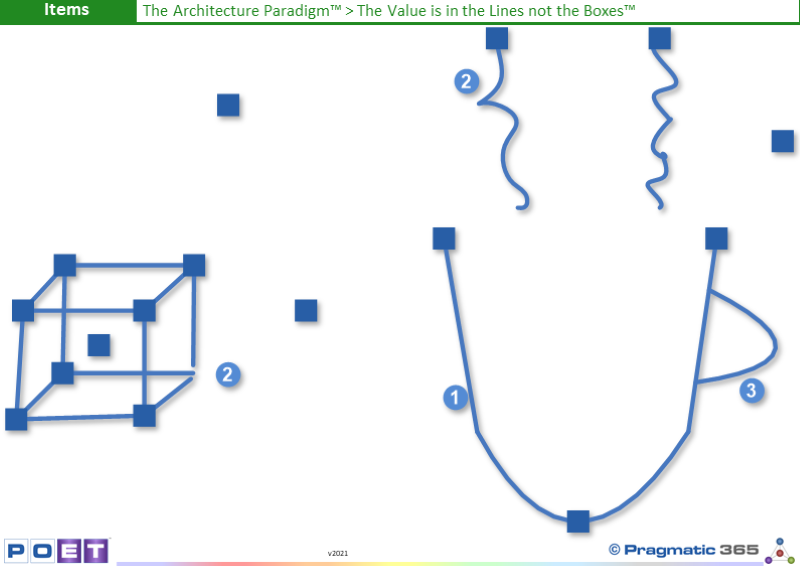
What are these boxes telling you?
The Value is in the Lines not the Boxes™. This phrase
expresses one of the key aspects of The Architecture Paradigm™. In fact, it
could be said that Architecture IS the relationships - the lines and not the
boxes, the space between the boxes, the relationship of the lines to the
spaces.
Another way to think of it is how the brain thinks (no pun
intended). The brain is composed of “things” - neurons, and “relationships” -
synapses. At birth your brain has about 86 billion neurons. It has been
estimated that the brain of a three year old child as about thousand, thousand
billion (1 quadrillion or 1015 ) synapses. By adulthood, although
the brain increases in size by about five times, the number of neurons do not
increase. Most of the growth is done by the growth of the synaptic connections
- learning. Interestingly, in adulthood the number of synaptic connections
falls through the process of Synaptic Pruning, stabilizing by adulthood from
1,000 thousand billion to around 100 to 500 thousand billion (trillion 1012)
If anyone ever told you that Architecture was not brain surgery, maybe they
should think again! So while the neurons (boxes) are important, it is the
synapses (lines) that are much more important.
...to read more, please Login or Register